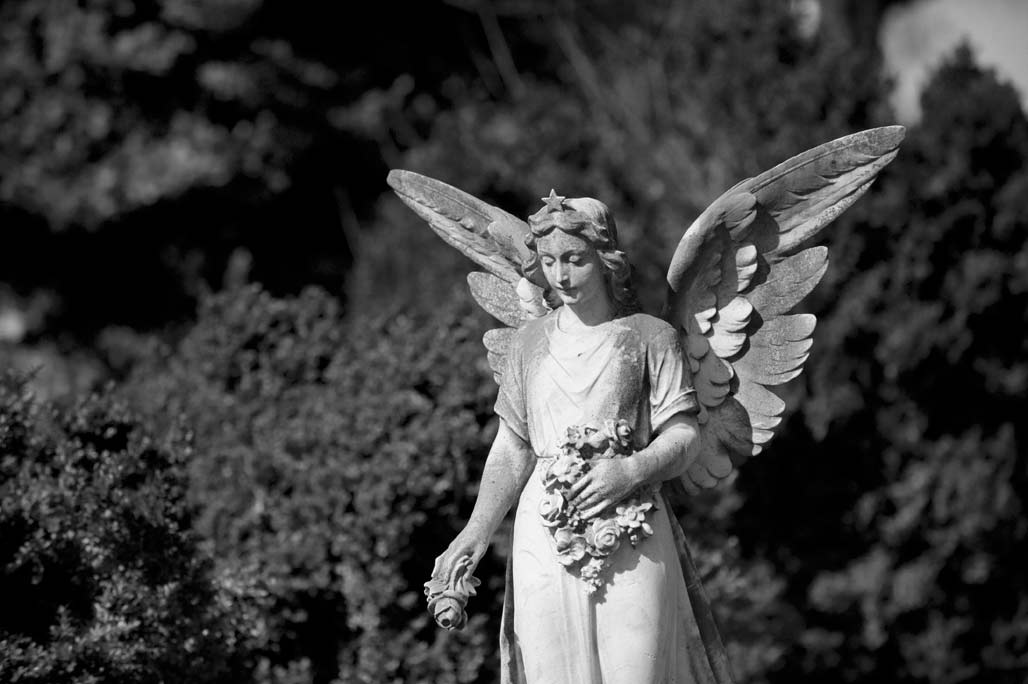
Month: March 2013
John S. White house
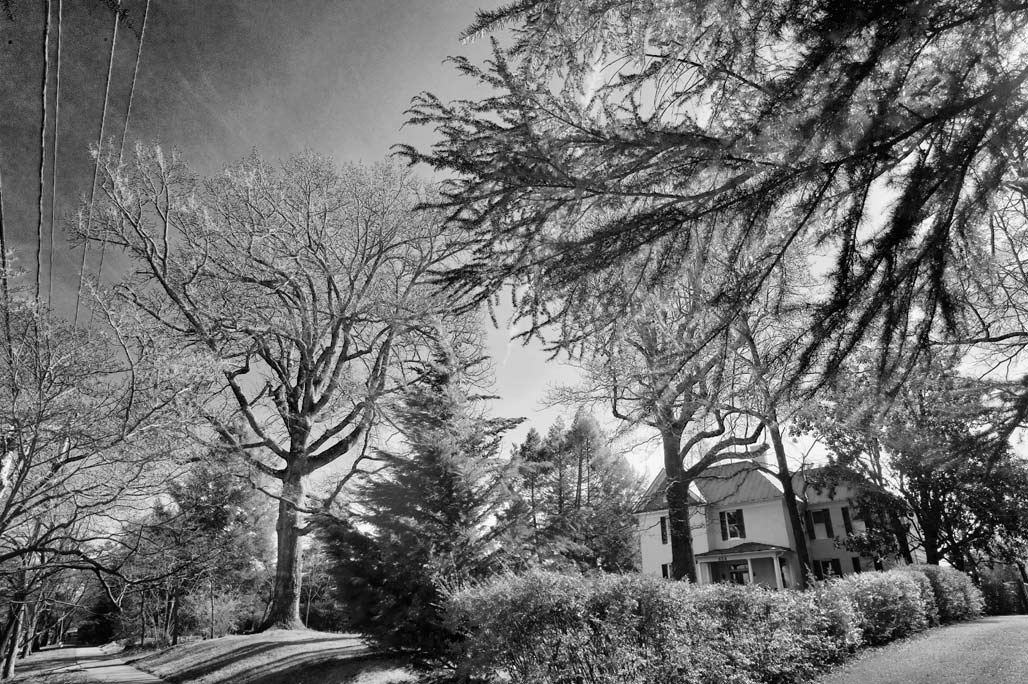
The John S. White House at 854 Locust Avenue was built by the prominent real estate lawyer and postmaster John S. White in 1903, just after he purchased the land from G. R. B. Michie. White was in business with William F. Long, for whom Long Street was eventually named. In 1910, White lived in the house with his wife, an infant son, his single brother-in-law, and two female African American servants who acted as nurse and cook, respectively.
Set far back from the street on a large lot and shaded by mature trees, this two-story, two-bay, house … has a hipped roof and is constructed of brick laid in common bond and painted. The north bay of the facade projects slightly and has a full pediment filled in with fish scale shingles; a hipped-roof, semi-hexagonal bay is attached to the north elevation; and a two-story, hipped-roof, two-bay addition is attached to the south elevation, set back from the facade and facing the street. A hipped-roof porch with slender Tuscan columns shades the recessed south bay and abuts the north bay of the facade. The south bay features the double glass doorway and a two-light transom. The 2nd floor of the south bay has a pair of narrow one/onesash
windows. The north bay features a single two/two-sash window on the 1st floor and a narrower one/one-sash window on the second. All of the windows have louvered shutters. The fully pedimented gable of the north bay retains the overhanging eave and cornice that characterizes the rest of the building, is filled in with wooden fish scale shingles, and has a small fanlight at its center. The roofs of both the porch and the house itself are covered in asphalt shingles. A modern, wooden ramp leads to the front entrance from the north side of the house. A one-story kitchen wing and a back porch are attached to the rear of the house.– (excerpted from the Martha Jefferson Historic District National Register of Historic Places registration form authored by Lydia Mattice Brandt PhD)
Luce
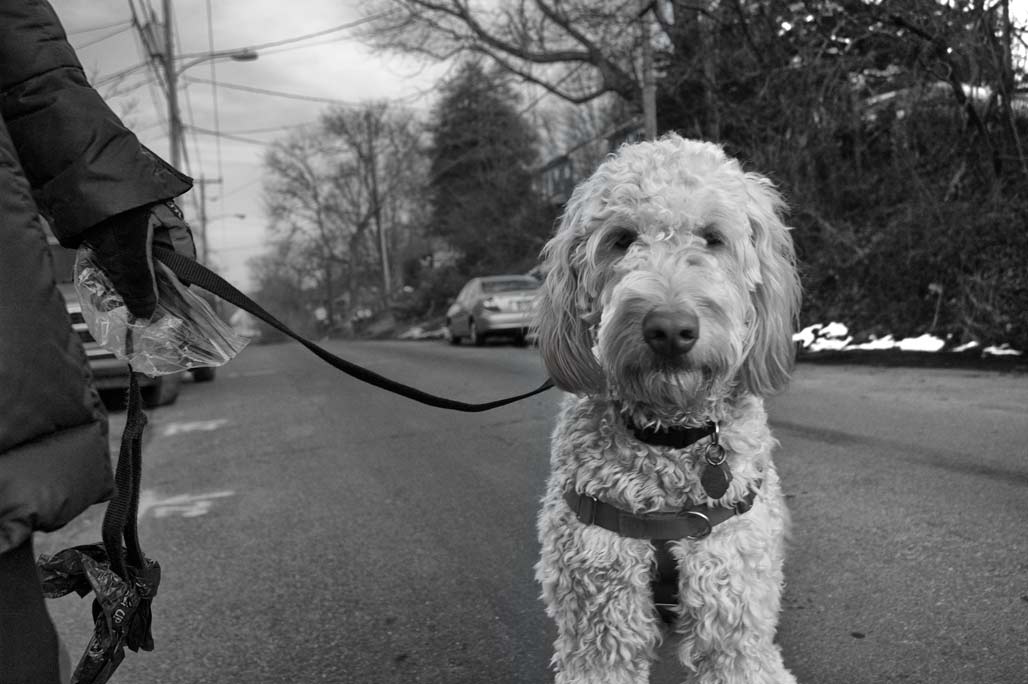
Neighborhood dog by the name of Luce.
lux venit ab alto
Emma
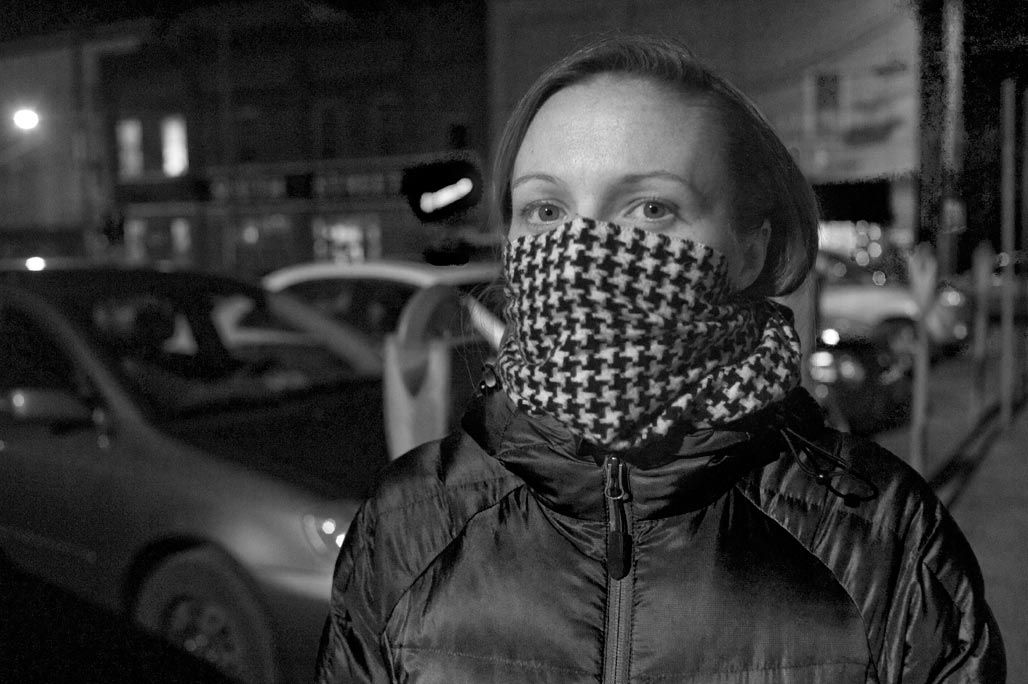
Free Bridge underside
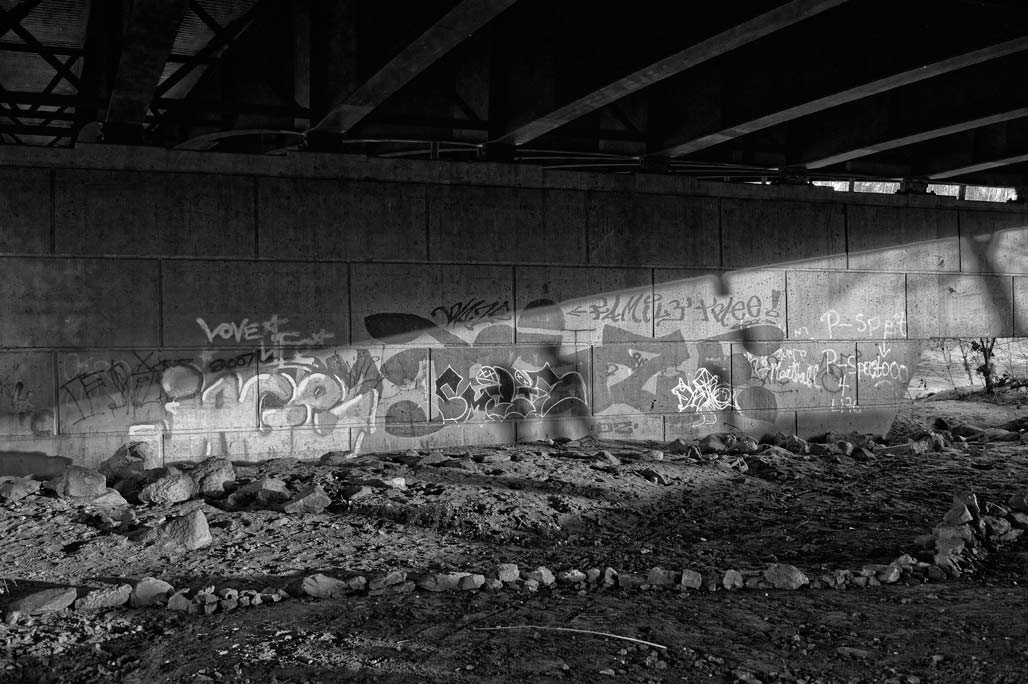
The City and the County keep graffiti off their structures, not so with VDOT.
south view (adjacency)
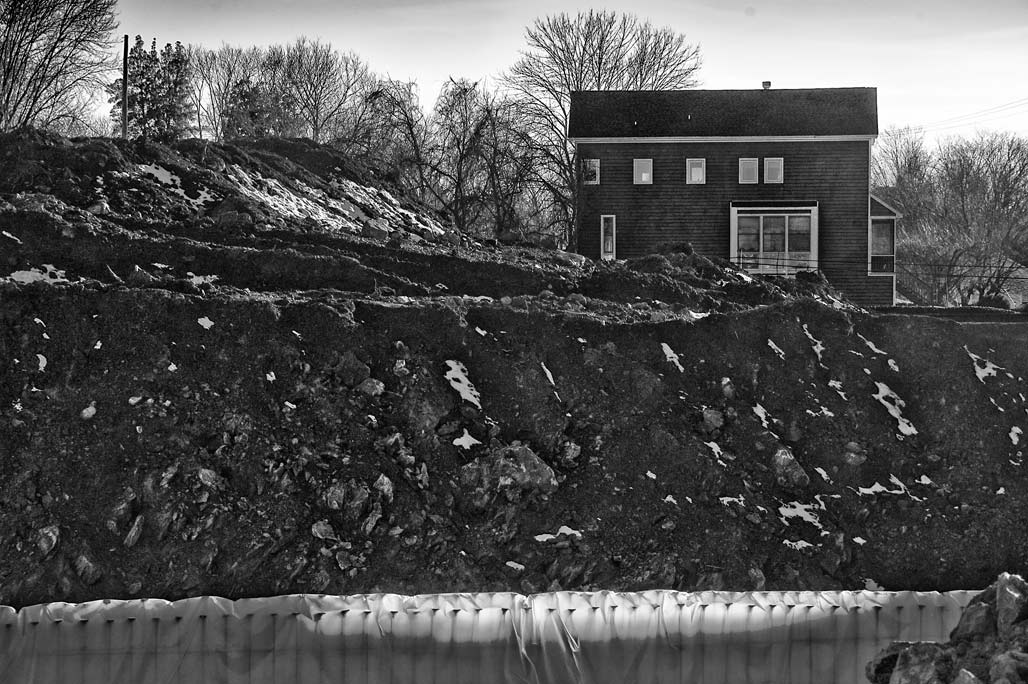
Intersection of R-2 and Downtown Extended.
adjacent — adj
1. being near or close, esp having a common boundary; adjoining; contiguous–dictionary.com
east view
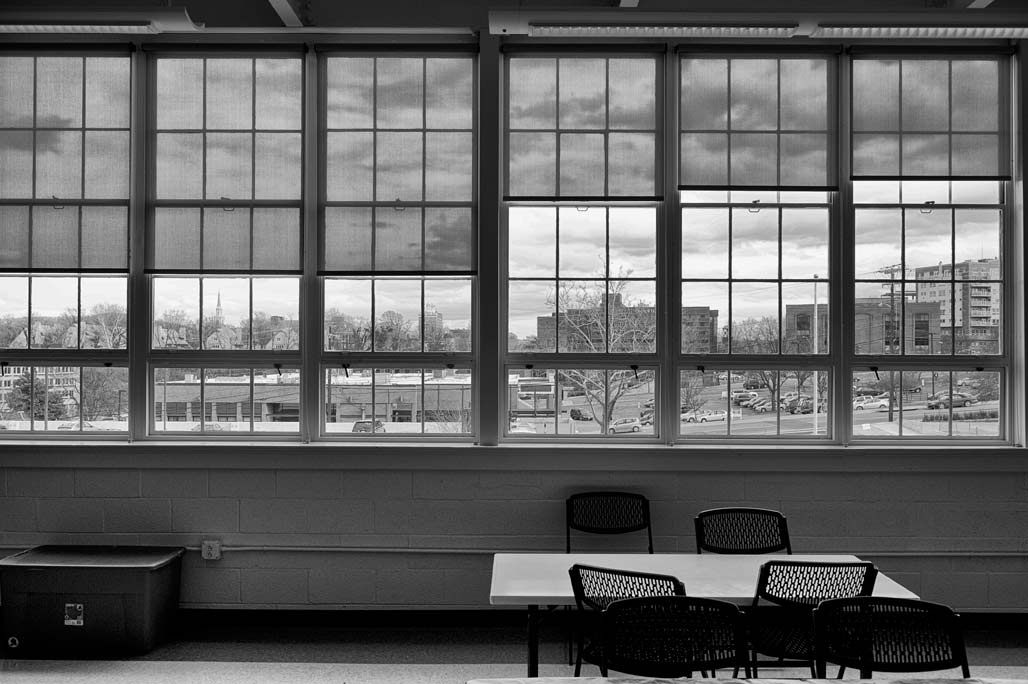
View east from Jefferson School over the Harland Bartholemew renewal zone. Does anyone have a 1950’s picture from this angle?
transcontinental

(Charlottesville Bicycle Pedestrian Coordinator) Amanda Poncy out for a morning walk with Buddy, five year old tricolor hound. Coincidentally, Poncy is walking on the 1976 TransAmerica Bicycle Trail, a 4247 mile transcontinental trail established for the Bicentennial.
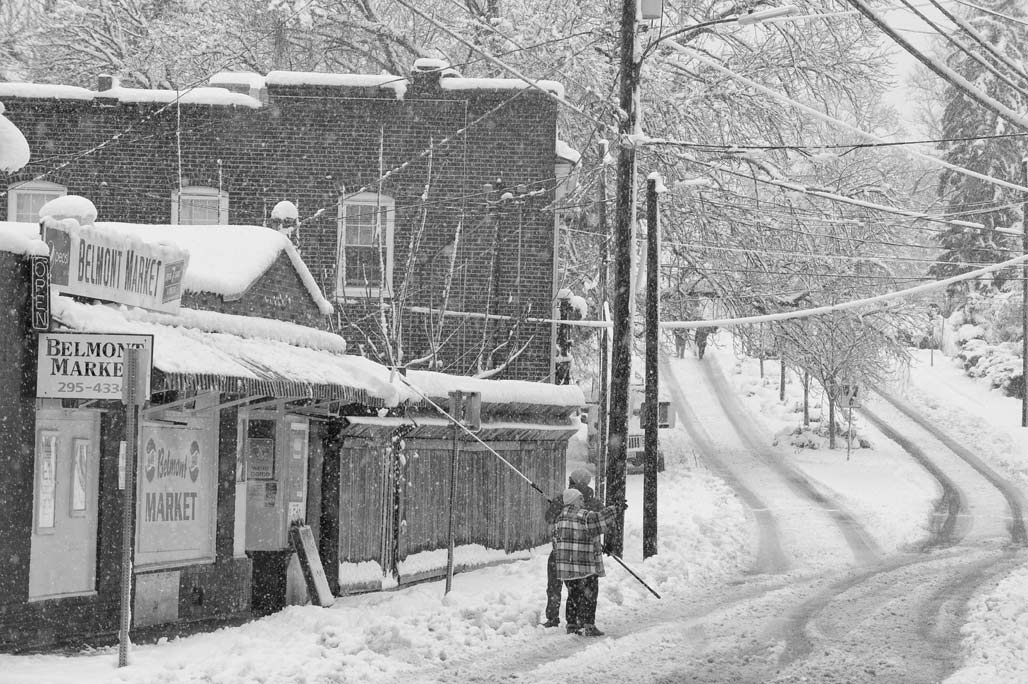
One of my favorite aspects of snow is the momentary reclamation of the street, the commons, the several square miles of our city which we ceded to the automobile in the last century.
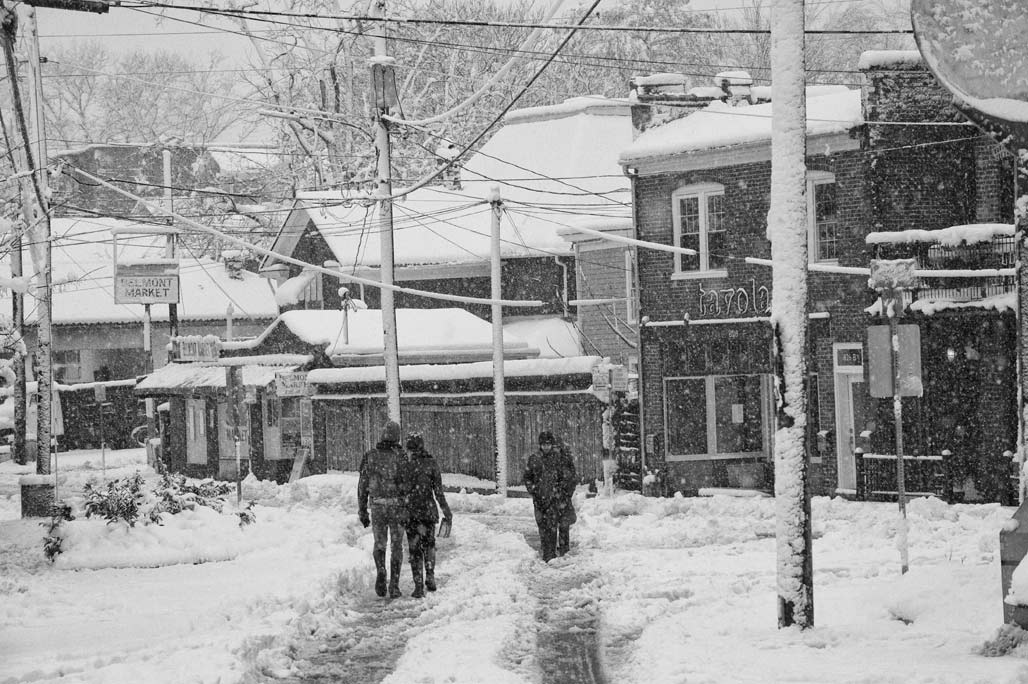
Pedestrians momentarily rule. People see and speak to each other. Smartphones are stored.
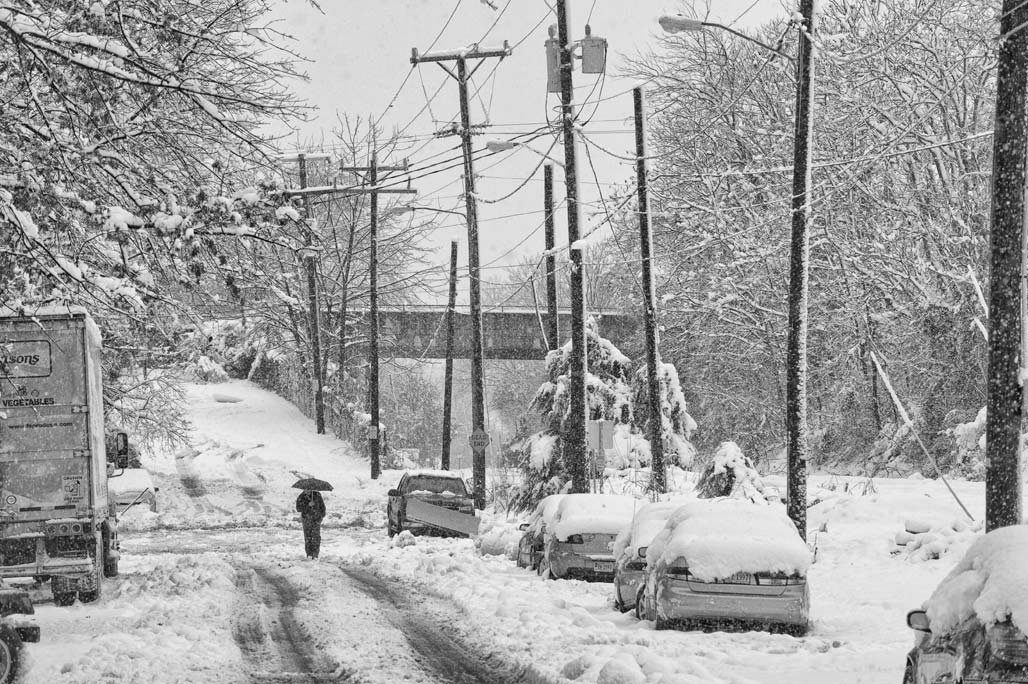
A calmness prevails. A chance to look around and see all we have created.
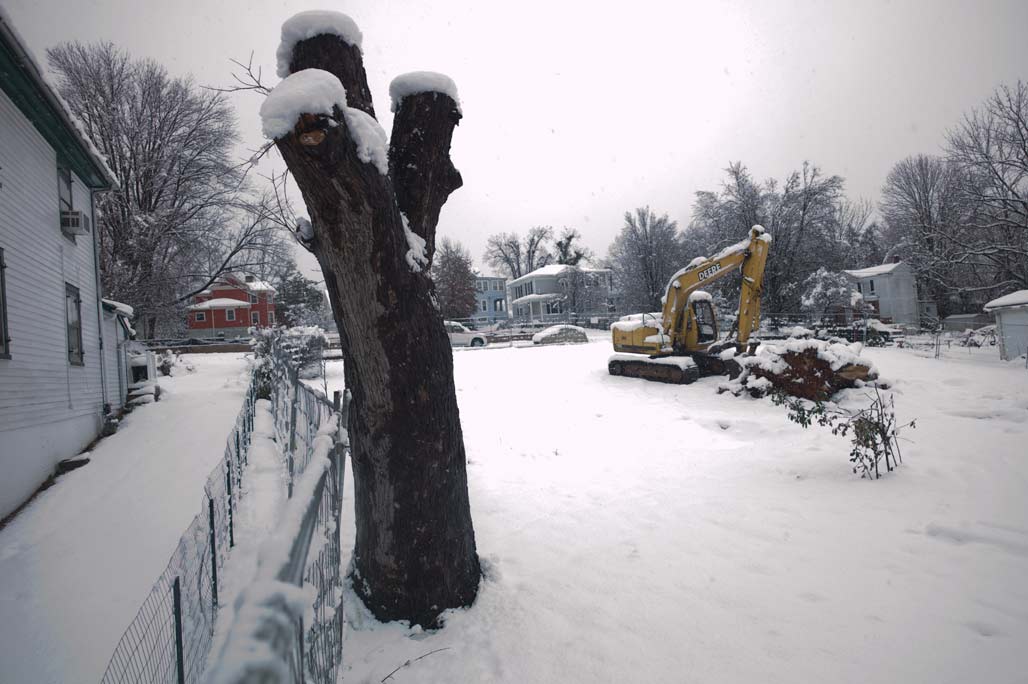
Walking about, everything is almost black and white, a most salutary condition.
cut through
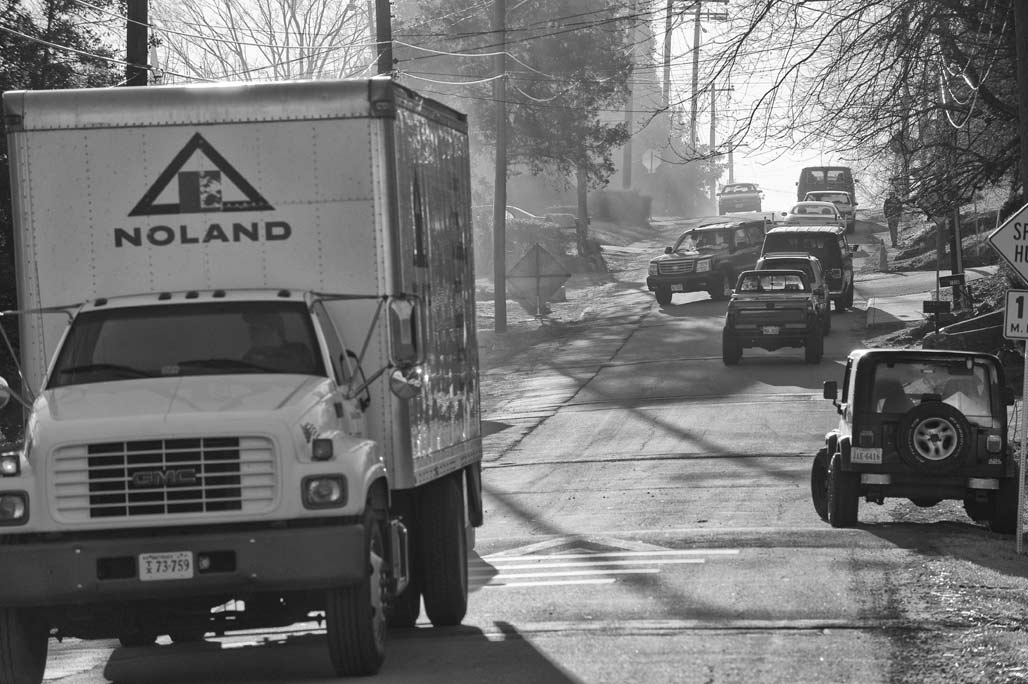
City neighborhood streets are used as an interchange by regional motorists. Getting from point A to point B in the County? Drive local streets through the neighborhoods (in this case Woolen Mills and Belmont), avoid collector streets and traffic signals.
hedera helix
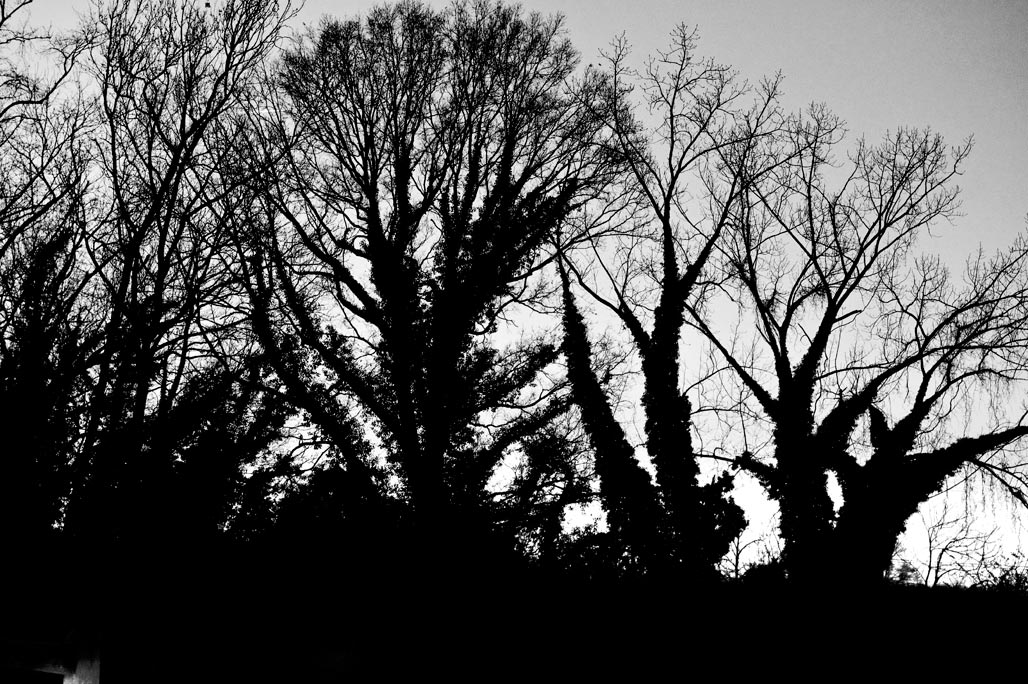
It is an evergreen climbing plant, growing to 20–30 m high where suitable surfaces (trees, cliffs, walls) are available, and also growing as ground cover where there are no vertical surfaces. It climbs by means of aerial rootlets with matted pads which cling strongly to the substrate.–Wikipedia
Lots of ivy in CHO. UVA is smart, they keep it off their buildings.
Wikipedia continues:
In the United States, H. helix is considered weedy or invasive in a number of regions and is on the official noxious weed lists in Oregon and Washington. Like other invasive vines such as kudzu, H. helix can grow to choke out other plants and create “ivy deserts”. State and county sponsored efforts are encouraging the destruction of ivy in forests of the Pacific Northwest and the Southern United States. Its sale or import is banned in Oregon. Ivy can easily escape from cultivated gardens and invade nearby parks, forests and other natural areas. Ivy can climb into the canopy of trees in such density that the trees fall over from the weight, a problem which does not normally occur in its native range.For this reason, it is especially important to remove ivy from trees, creating “survival rings”. In its mature form, dense ivy can destroy habitat for native wildlife and creates large sections of solid ivy where no other plants can develop.